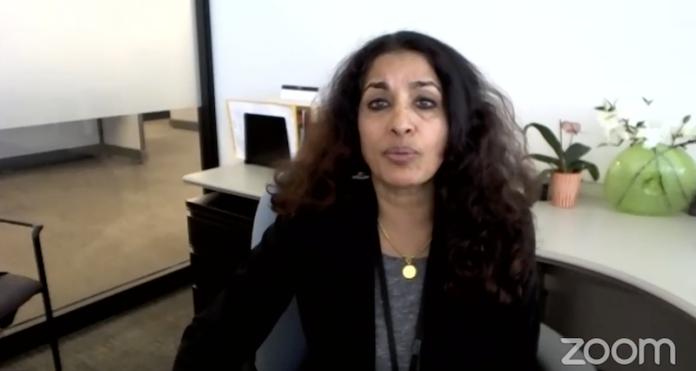County’s own proactive health order, adopted Dec. 12, directly aligns with state order
The Bay Area’s intensive care unit (ICU) bed availability dipped to 12.9% Wednesday, triggering a shift to being under the state’s mandatory stay-at-home order. While all 11 Bay Area counties will be subject to the order, six counties — including Sonoma County — preemptively issued their own orders, which align with the one coming down from the state.
“This does not directly impact Sonoma County, however, as we proactively adopted the state’s stay at home order on Dec. 12,” said Dr. Sundari Mase, health officer for Sonoma County in a Dec. 16 virus briefing.
The state health order, which will more directly impact the counties that hadn’t preemptively issued orders — San Mateo, Napa, Solano and Santa Cruz — will go into effect on Dec. 17 and is in place until at least Jan. 7. Sonoma County’s order, however, will remain in effect until at least 11:59 p.m. on Jan. 9.
“The fact that the entire region is now under a mandatory stay-home order is just further evidence of how quickly the virus is spreading in the Bay Area and throughout the state,” said Mase in a statement. “These orders are incredibly challenging for businesses, we know. But they represent our best chance at stopping this surge before it gets out of control. Our case rate and numbers are at an all-time high and some of our hospitals are already being pushed to extremes.”
Mase said that the health orders coming down from the state, as well as the preemptive health orders issued by Sonoma County and five other Bay Area counties ahead of the order from the state were a “necessary response to a very disturbing increasing in COVID cases and hospitalizations that we’re seeing here, throughout the state and throughout the nation.”
As of the Dec. 16 briefing, the county has 15,096 total virus cases, with 3,580 active cases and 11,350 recovered cases and 166 deaths. The county’s adjusted case rate is now 24.1 cases per 100,000 people, up from 17.9 cases last week. The county’s unadjusted case rate is closer to 45 cases per 100,000, Mase said. The county’s testing positivity rate is at 7.1% and its equity metric is 10.6.
“We are in the darkest days of this pandemic. Nevertheless, we are encouraged by the rollout this week of Pfizer’s COVID vaccine, which will give us a much-needed tool to fight the pandemic and eventually return to normal,” Mase said, adding that the county is anticipating getting its first units of the Pfizer vaccine on Dec. 17.
While the county’s own ICU case tracker is down for maintenance, the county’s health program manager Kate Pack said that Sonoma County currently has 35.4% available ICU capacity, including ICU beds that are currently staffed or could be staffed “within regular resources,” a number that does not include the county’s surge capacity.
Numbers reported by CalMatters using by-county state data show Sonoma County with 12.9% ICU capacity, though the state reports currently staffed ICU beds.
Getting vaccinated
Sonoma County is getting its first shipment of the Pfizer COVID-19 vaccine this week, with another one on the way. Ahead of the arrival, Mase along with 12 other Bay Area health officers issued a statement affirming that vaccines in the Bay Area will distributed following the state and federal frameworks, which prioritizes vaccine distribution to health care workers and those working in long-term care settings, as well as residents of skilled nursing facilities, assisting living facilities and those in similar long-term care settings.
Both shipments of the vaccines will be for the first phase of the two-part immunization process.
County health officials urged residents to continue wearing masks once they get the vaccine, since the highest efficacy comes after the second dose of the vaccine.
73.7
F
Healdsburg
May 25, 2025










